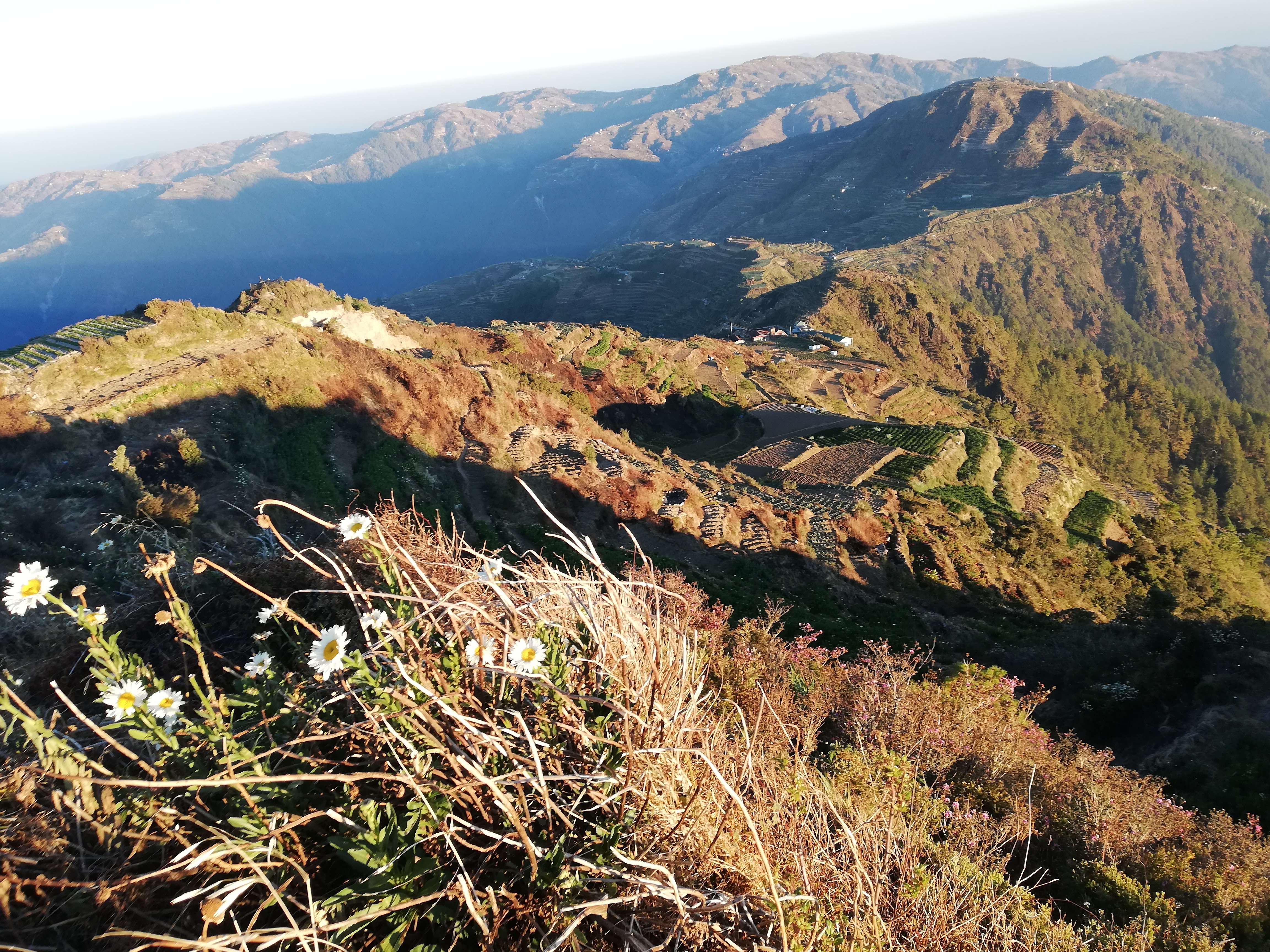Here is the latest list of the top ten highest mountains in the Philippines that you should include in your bucket list.
The Philippines is home to fascinating mountaineering destinations. Many of these remain unspoiled and have been declared nature reserves to protect the rich flora and fauna.
Hiking to these mountains will lead you to an adventure of a lifetime. You’ll have a personal glimpse of the many unique species that are only found in the Philippines.
This travel guide will take you to the top highest mountains in the Philippines. The next time your wanderlust strikes, why not brave your way to these summits?
Here we go!
Get the latest updates about Philippine tourism including popular and off-beaten destinations by downloading the Visitour PH app. It’s your one-stop shop for all Philippine travel-related information including destinations and accommodations!

READ: Falls in the Philippines you’ve never heard before
Behold the Highest Mountains in the Philippines
1. Mt Apo

Mt Apo is the “King of Philippine Mountains,” owing to its majestic height, making it the tallest mountain in the Philippines. Because of the thriving ecological diversity, the national government declared it a national park.
Among the magnificent species you’ll find here are the critically-endangered Philippine Eagle, Rafflesia giant flowers, and several other mammal species.
You’ll pass by primeval forests, a mystical lake, sulfuric vents, and mossy forests as you navigate your way. While atop, you’ll get a jaw-dropping view of Mindanao’s varied landscapes, from lowly plains to towering mountain ranges.
- Location/Jump-off: Davao Del Sur &Cotabato
- Elevation: 2, 956 meters above sea level (MASL)
- Trekking Time: 10-11 hours to the summit
Tag: 1st Highest Mountain in the Philippines
2. Mt Dulang-Dulang
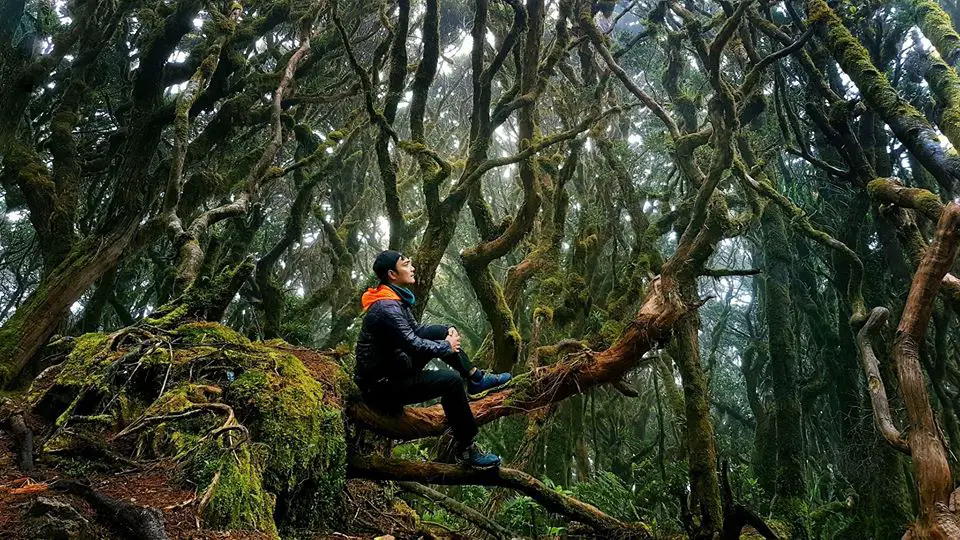
Mt Dulang-Dulang ranks as the second highest mountain in the Philippines. Just like Mt. Apo, it is a botanical paradise and one of the remaining pristine ecosystems in the country.
Dipterocarp forests cover the lower slopes, while enchanting mossy forests dominate the upper elevations. Philippine eagles also inhabit the mountain, making it a critical sanctuary.
Trekking to the mountain will lead you to a memorable wildlife encounter. Plus, you’ll be rewarded with amazing views of the forests and sea of clouds.
- Location/Jump-off: Sitio Bol-ogan, Brgy. Songco, Lantapan, Bukidnon
- Elevation: 2,938 MASL
- Trekking Time: 10 hours to the summit
Tag: 2nd Highest Mountain in the Philippines
READ: Stunning Forests in the Philippines You Should Visit Now
3. Mt Pulag

Mt Pulag is now the third highest mountain in the Philippines, though not too long ago, it was ranked second. It’s known for its rolling summit covered in scenic grasses and mini-bamboo.
From here, you’ll get one of the most beautiful views of the sea of clouds, stretching as far as your eyes can see. Different ethnic tribes such as the Ibaloi, Kalanguya, Karao, and the Kan-kanaey inhabit the lower slopes of the mountain.
Their indigenous forest conservation practices helped protect the mountain. Sadly, commercial vegetable gardening is slowly destroying the mossy forests of Mt. Pulag. As a mountaineer, what can you do to help protect it?
- Location/Jump-off: Kabayan, Benguet & Ifugao & Nueva Vizcaya
- Elevation: 2,926 MASL
- Trekking Time: 4-5 hours to the summit
Tag: 3rd Highest Mountain in the Philippines
4. Mt Kitanglad
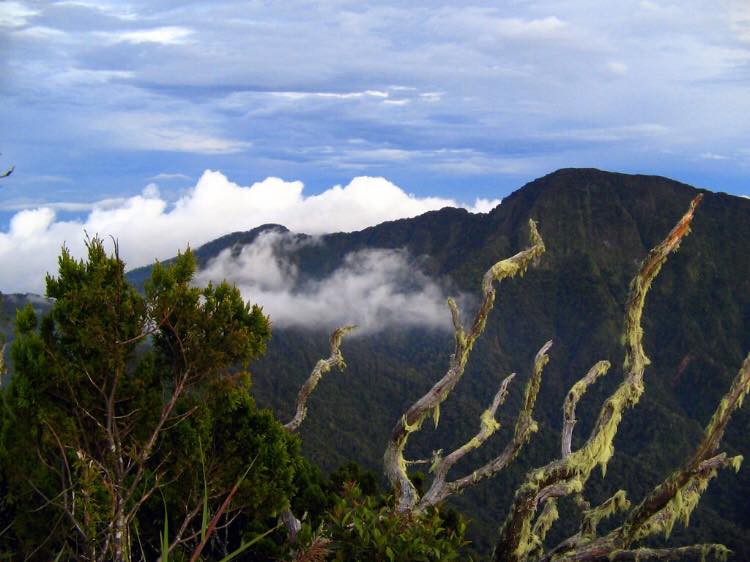
Mt Kitanglad is immortalized in the legends of the indigenous communities surrounding it. For them, unseen spirits and deities inhabit the mountain; thus, they need to protect and respect it.
One legend tells that during the great flood, only the summit of Mt Kitanglad was spared, allowing some survivors who then built communities around it.
Since Mt Kitanglad is within the same mountain range as Mt Dulang-Dulang, you’ll also be rewarded with stunning mountain views, pristine trails, and mystical forests. Who knows? You might even catch sight of the Philippine Eagle.
Mt Kitanglad is the fourth highest peak in the Philippines, with an impressive height of 2,899 MASL. It also has one of the most diverse ecosystems and the highest concentration of endangered species. The Philippine Eagle is rarely sighted on the tall trees of the mountain.
- Location/Jump-off: Impasug-ong, Bukidnon
- Elevation: 2,899 MASL
- Trekking Time: 10-11 hours to the summit
Tag: 4th Highest Mountain in the Philippines
5. Mt Tabayoc
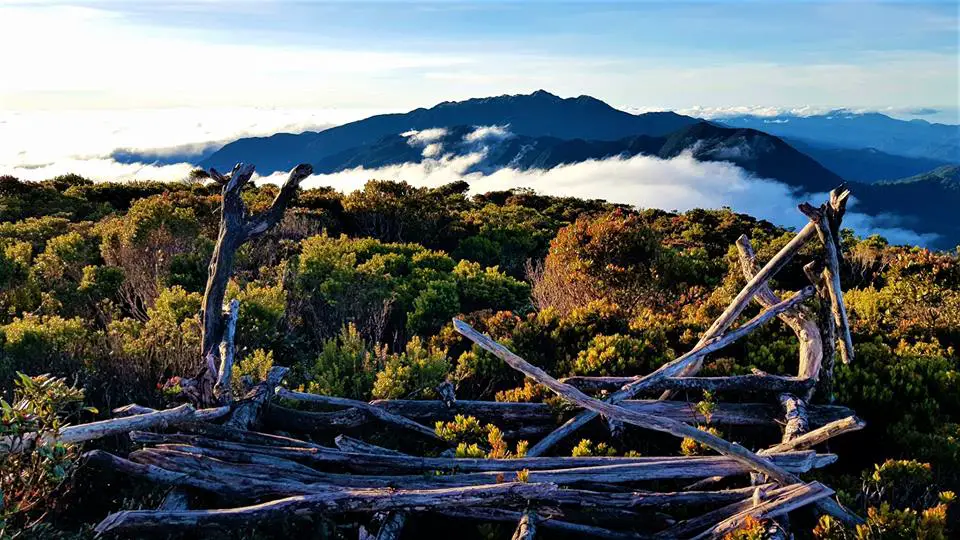
Mt Tabayoc presents what locals refer to as the “Monkey Trail.” That tag refers to a particular part of the trail, wherein you would need to hang onto vines, scramble across boulders, and hold onto branches to get yourself moving.
Somehow, you would feel like you are Tarzan in real life when you get into this. But once you reach the top, expect mesmerizing views of the forest-clad mountains around you, including Mt Pulag, Mt Timbak, and Mt Kalawitan.
Once you’re done trekking, you can proceed to the enchanting four lakes: Lake Tabeo, Lake Bulalacao, Lake Lake Natep-Ngapos, and Lake Incolos.
- Location/Jump-off: Brgy Ballay, Kabayan, Benguet
- Elevation: 2,842 MASL
- Trekking Time: 3-4 hours
- Guide Fee: Php 700 for 5 pax
Tag: 5th Highest Mountain in the Philippines
6. Mt Kalatungan
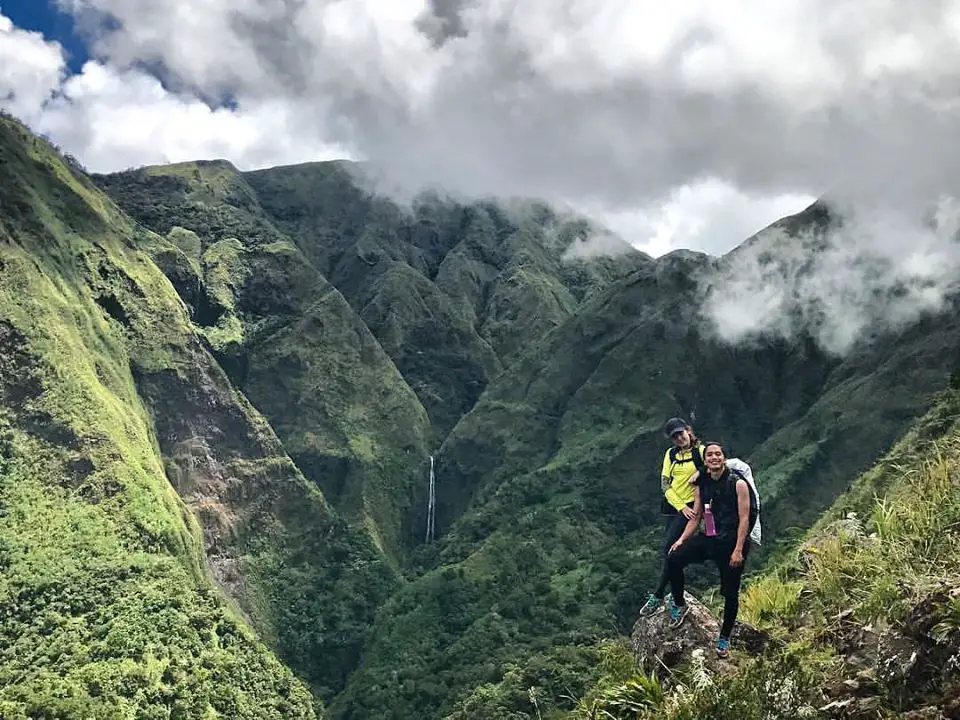
Mt Kalatungan is one of the most formidable mountains in the Philippines because of its extremely challenging trails. But don’t let that stop you from assaulting it, as you’ll encounter cascading waterfalls, bewildering mossy forests, and so much more.
For the indigenous inhabitants, the mountain is sacred. Thus, they perform rituals before allowing hikers to trek to their summit. Aside from being one of the top ten highest mountains in the Philippines, it is also one of the most biodiverse.
The mountain is also a critical refuge for the vanishing Philippine Eagle.
- Location/Jump-off: Bukidnon
- Elevation: 2,824 MASL
- Trekking Time: 15 hours to the summit
Tag: Top 6th Highest Mountain in the Philippines
7. Mt. Piapayungan

Mt Piapayungan is one of the least explored mountains in the Philippines. Vast dipterocarp mountains, some of the last remaining on the island, occupy much of its lower slopes.
These host countless species, with many yet to be discovered by science. Trekking to the mountain is taking you back in time. It will give you a picture of what Mindanao island must have looked like before logging and mining decimated most of its forests.
A vast swath of the mountain is covered by grasses and shrubs, a unique ecosystem that hosts rare wildlife species.
Stay alert as you trek so you may glimpse bizarre wildlife species. That would be an encounter of a lifetime.
- Location/Jump-off: Lanao Del Sur &Cotabato
- Elevation: 2,817 MASL
Tag: 7th Highest Mountain in the Philippines
8. Mt Ragang
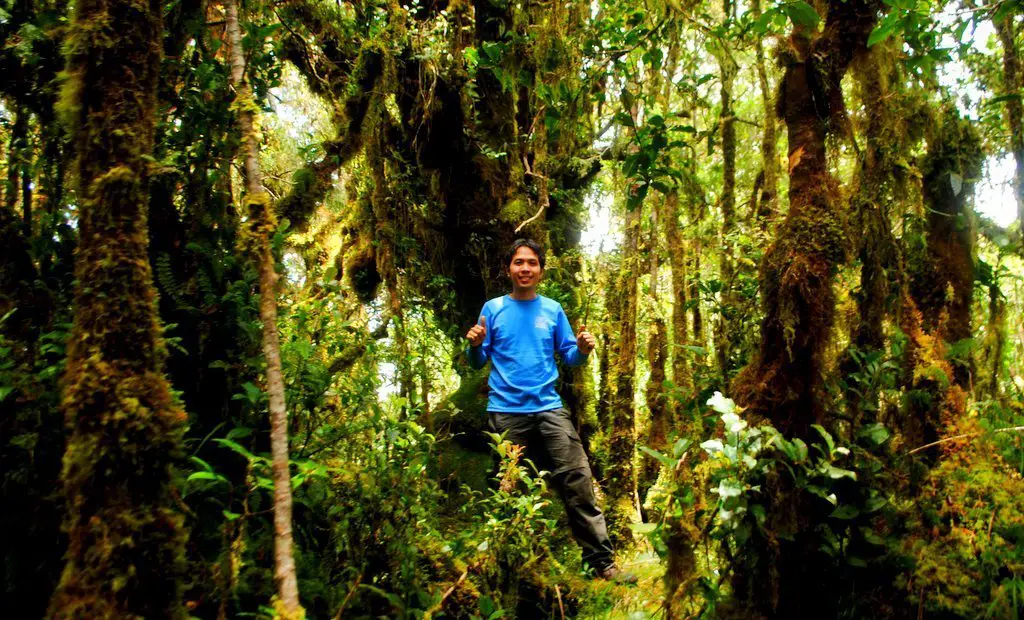
Dubbed the “Blue Mountain,” Mt Ragang lies on the same range as Mt Piapayungan. Only some local hunters and a few hikers were able to reach its summit due to its remoteness.
As one of the least visited mountains, you can expect Mt Ragang to give you an adventure of a lifetime. Prepare to get wild when you trek there as you’ll navigate untamed trails and conquer nerve-wracking challenges.
But that’s all worth it because, in almost every part, you’ll encounter rustic beauty such as untouched forests, giant trees, and panoramic summit views.
- Location/Jump-off: Lanao Del Sur &Cotabato
- Elevation: 2,803 MASL
Tag: 8th Highest Mountain in the Philippines
9. Mt Maagnaw

Mt Maagnaw ranks as the eighth highest mountain in the Philippines. It also presents one of the most challenging hikes, with trekkers rating it 9/9 in terms of difficulty.
But that’s a perfect recipe for a lifelong adventure. Since it is within Kitanglad Range, Mt Maagnaw also teems with wildlife species, including the iconic Philippine Eagle.
Draw closer to nature as you marvel at entrancing mossy forests and captivating mountain views.
- Location/Jump-off: Sitio Bul-ogan, Lantapan, Bukidnon
- Elevation: 2,742 MASL
- Trekking Time: 17-18 hours to the summit
Tag: 9th Highest Mountain in the Philippines
10. Mt Timbak
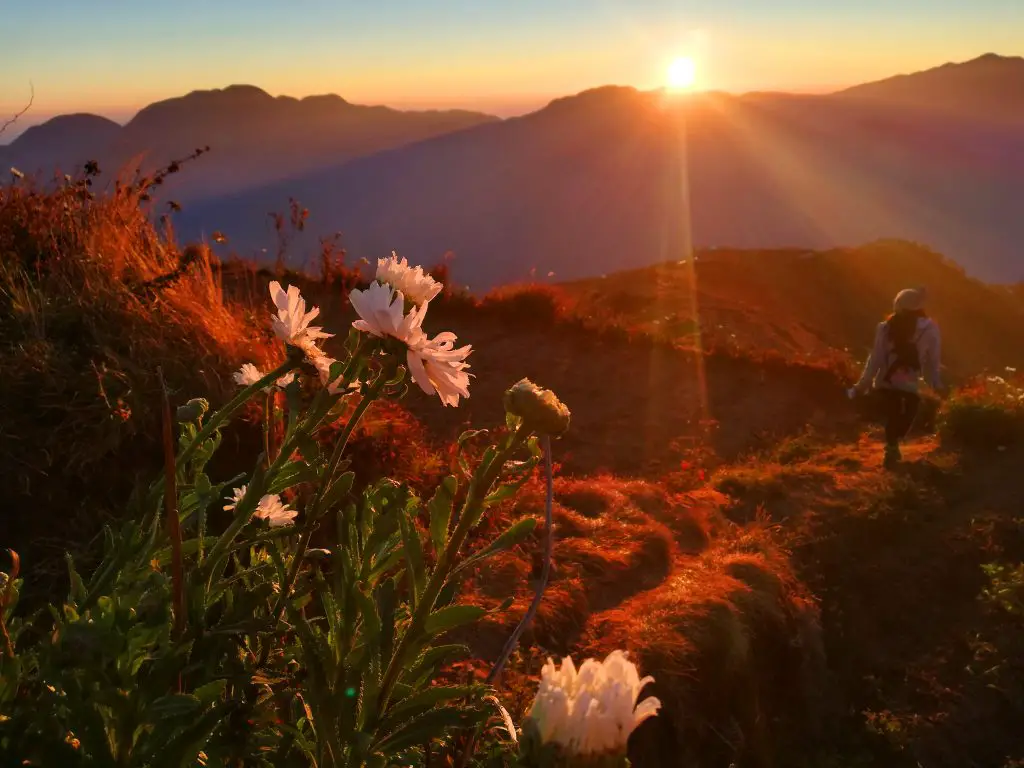
Completing the so-called Mountain Trio in Luzon, Mt Timbak nails its place as the tenth highest mountain in the Philippines. With such majesty, you might think of wild trails and an unforgiving trek to reach its summit. But no.
Trekking to Mt Timbak is as easy as pie and works out fine for beginners. That’s because there is a local road leading almost near the summit. Instead of forests, you’ll find vegetable gardens here.
The best time to visit is during the early morning so you can get a breathtaking view of the sunrise. From here, you’ll also gaze on the highest mountains in Luzon, such as Mt Pulag, Mt Tabayoc, Mt Amuyao, and Mt Kalawitan.
If you have time, you can check out the famous mummies of Kabayan.
- Location/Jump-off: Atok, Benguet&Kabayan, Benguet
- Elevation: 2,717 MASL
- Trekking Time: 2 hours from Halsema Highway; 15 minutes from where the local road ends
Travel Guide: Mt. Timbak in Benguet (DIY Travel Guide): Everything You Need to Know
Tag: 10th Highest Mountain in the Philippines
So, there you have it. That’s the list of the top ten highest mountains in the Philippines. If you’re feeling adventurous, dare to assault these majestic peaks.
As you conquer each of them, you’ll realize that the Philippines has so many valuable ecological treasures in store. Besides, you’ll learn to appreciate the culture of the local people and become aware of the need to protect these mountains.
Yes, they are our last ecological frontiers. Let us all be a part of their protection and preservation.

